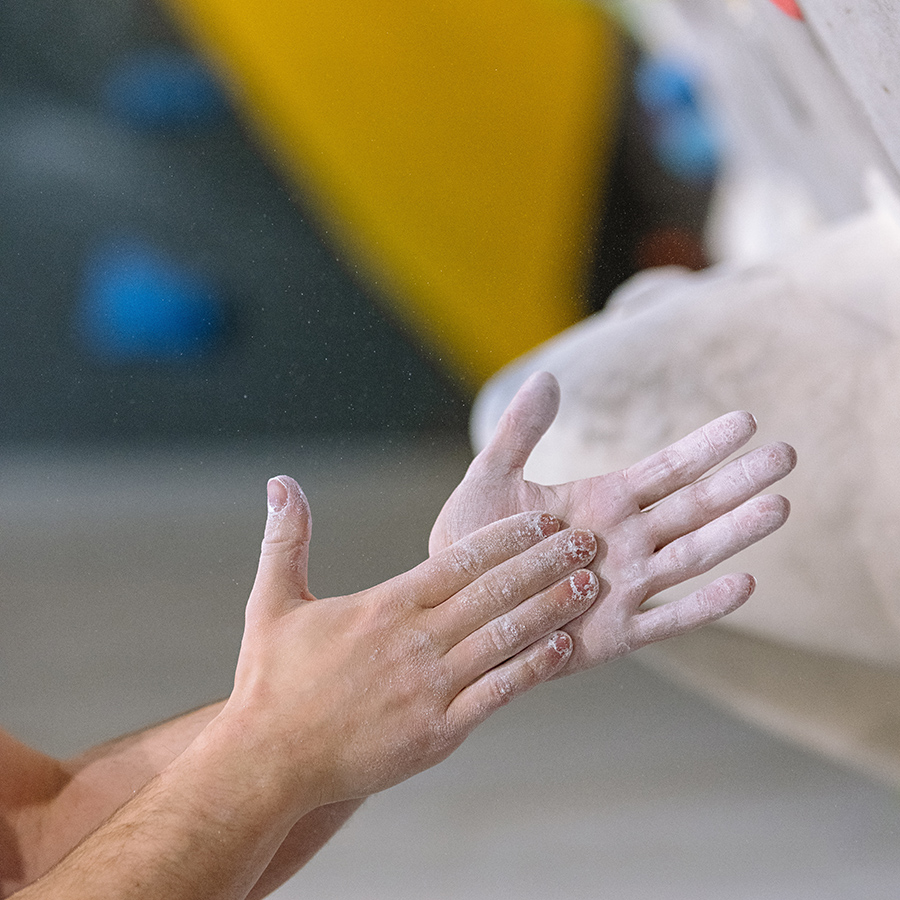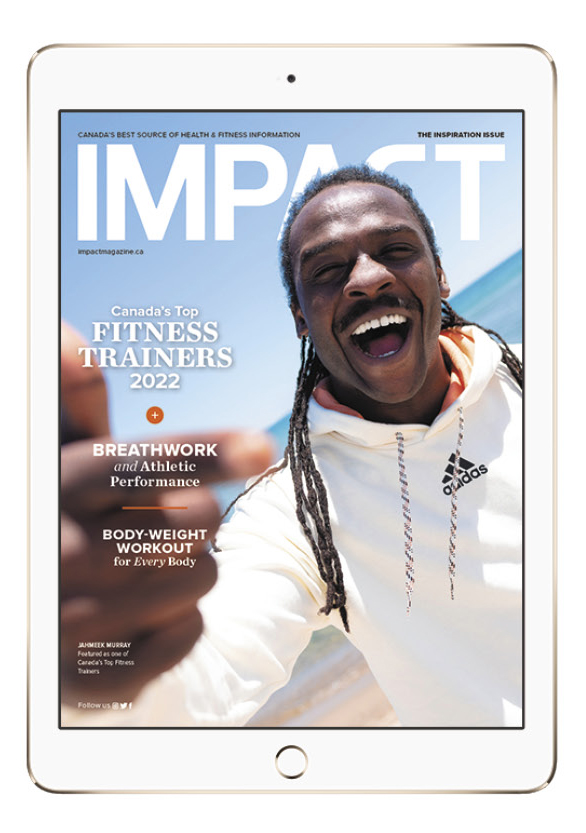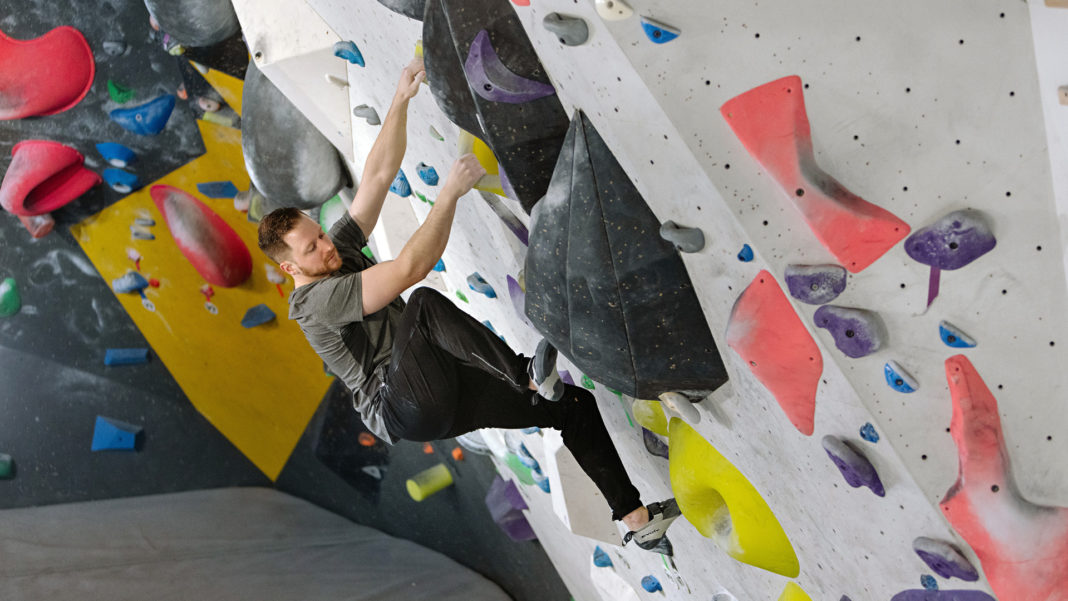The secret is out! Climbing stormed into the fitness scene with three disciplines debuting at the 2020 Olympics: bouldering, sport climbing and speed climbing. You don’t have to be an Olympian to feel the benefits of climbing and more people are getting into the sport than ever before.
Bouldering is quickly becoming the most popular discipline in North America. It’s a simple and pure form of climbing: no ropes, no harnesses, nothing but a pair of climbing shoes and some chalk to dry the sweat. In bouldering, it’s all about bagging the send—getting from the bottom of the route to the top without falling. The boulders are rated by difficulty and the intermittent reinforcement of sending a hard boulder makes this an incredibly addictive sport.
By focusing on having fun and climbing a large variety of boulder problems the byproduct can be incredible fitness. After a few months of climbing, climbers are sometimes surprised with new abilities their bodies have. People have gotten their first ever pull-up, or their first pistol squat without even training for these traditional fitness goals, simply by climbing consistently.
For beginners, like trying anything new, walking into a bouldering gym can feel intimidating, but rest assured that there are fun boulders for everyone to try. Despite being an “individual” sport, bouldering is incredibly social. Going to the gym for the first time with a great crew of encouraging friends will certainly help maximize your first experience. If you don’t yet have anyone that is stoked to try climbing with you, the climbing community generally is very welcoming and it won’t take long to start recognizing some familiar faces and making new climber friends.
DIFFICULTY RATING
When you’re starting out, understanding the gym’s grading system can help you progress and find climbs you like. The most common North American grade scale is the V scale; boulders start at V0 and can be as high as V17, and some gyms might have their own grading system. In competition climbing the start of the boulder is usually marked by four pieces of tape, one for each point of contact (two hands and two feet). Sometimes part of the challenge is figuring out where each point of contact needs to go to successfully establish control off the ground; the finish is also usually marked by a piece of tape. That being said not every gym utilizes the international standard, they might have their own system, regardless of the system used they are usually designed to be highly intuitive. Modern bouldering gyms often hire professional routesetters; these setters combine a technical craft with an artistic representation of climbing moves to create boulder problems. The types of movement in bouldering are infinite and unlimited. Every boulder problem is different and getting the send might require balance, flow, power, endurance, body positioning, tension, explosive dynamic jumps, laser-accurate foot work and sometimes perfect timing. Most modern boulding gyms set routes by hold colour. Routesetters generally try to create routes to showcase one of the above mentioned styles where the most elegant solution is the path of least resistance. That being said, climbing is all about finding your personal strengths. Sometimes the solution is unique to every climber. If you’re having trouble, you can watch other climbers for clues. There is something for every ability.
Regardless of the grading system used, progressing on the scale can feel exponential. The best thing a beginner can do to accelerate the learning curve is to first focus on improving footwork and implementing better climbing technique. Getting a good pair of well-fitting climbing shoes will help you stand with more confidence on the ball of your foot, this helps take weight off the arms and prevents over-gripping. Many new climbers will find that after a few visits to the gym, and simply trying a variety of boulder problems they will have already rapidly improved from their first attempts.
NEXT STEPS
For the advanced climber the sport truly becomes an endeavor in self mastery. It is very common that climbers will eventually experience a plateau in their improvement and increasing performance will require focusing on weaknesses or double-downing on strengths.
Usually at this stage climbing can be broken down into the following: finger strength, core strength, mobility/ flexibility, power, endurance, contact strength, body tension and strength-to.weight ratio. At this stage climbers should familiarize themselves with popular training tools like the campus board, hang boards, system walls, etc. These tools, when used correctly, can dramatically improve contact strength, finger strength, power, endurance and body tension. Regardless, the most important aspect of training is always enjoying the process and having fun. With good habits climbing can be the perfect lifelong sport! As legendary climber Alex Lowe said, “The best climber is the one having the most fun.”

CLIMBING LINGO
BETA: A very detailed and specific breakdown of the solution to the boulder problem
SPRAYING BETA: When someone shares the solution when it isn’t wanted, it is bad etiquette to share unsolicited beta, despite climbing being social it is important to respect other climbers desire to discover their own sequences SEND: Getting from bottom to top without falling
FLASH: Doing the boulder on the first attempt
PROJECT: A route that takes multiple sessions to solve/send. In outdoor climbing “projects” are routes not yet sent
PUMPED: Extreme fatigue in the forearms
CRUX: Hardest move on the climb
Photography by Jon Adrian

Read This Story in Our 2022 Inspiration Digital Edition
Read about Canada’s Top Fitness Trainers 2022. Need new ideas for your next workout. Test your fitness levels and see how you measure up. World-renowned breath expert, Richie Bostock shows us how to breathe correctly, 7 yoga poses for a better sleep, recipes and much more!

















